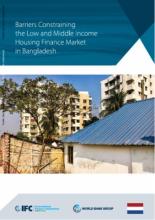Land Library
Welcome to the Land Portal Library. Explore our vast collection of open-access resources (over 74,000) including reports, journal articles, research papers, peer-reviewed publications, legal documents, videos and much more.
/ library resources
Showing items 82 through 90 of 4457.Since 2009, insecurity in the North-East of Nigeria has led to the loss of over 20,000 lives and the displacement of over two million people. Throughout the region livelihoods have been disrupted, and homes, public buildings and infrastructure destroyed.
This report summarizes the results of the analytical work on housing market finance carried out by the World Bank Group at the request of the Ministry of Finance.
Well-functioning cities reduce the economic distance between people and economic opportunities. Cities thrive because they enable matchmaking -- among people, among firms, and between people and job opportunities.
This paper illustrates how the capabilities of GIS and satellite imagery can be harnessed to explore and better understand the urban form of several large African cities (Addis Ababa, Nairobi, Kigali, Dar es Salaam, and Dakar).
In Bhutan, the public sector is usually seen as the most desirable employer. This study asks if this can be attributed to public sector employees receiving higher wages than comparable private sector workers.
The Enterprise Surveys (ES) focus on many aspects of the business environment. These factors can be accommodating or constraining for firms and play an important role in whether an economy’s private sector will thrive or not.
The aim of this report is to provide guidance to governments, institutions, and development partners on how to approach the provision of advanced information and communication technology (ICT) services to the higher education and research community in Africa.
The study aims to assess the market for low and middle income housing finance in Bangladesh and identify the demand trajectory of this segment over the next 4 years. In addition, the report identifies factors that constrain the housing finance from serving low and middle income households.
Agriculture contributes about 35 percent to the Gross Domestic Product (GDP) of Nepal. But growth in the sector has been quite volatile in the last decade, tothe extent that the lowest and highest growth rates were recorded in consecutive years.









